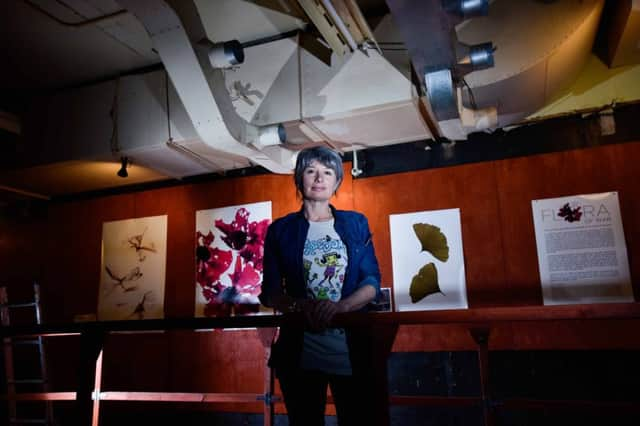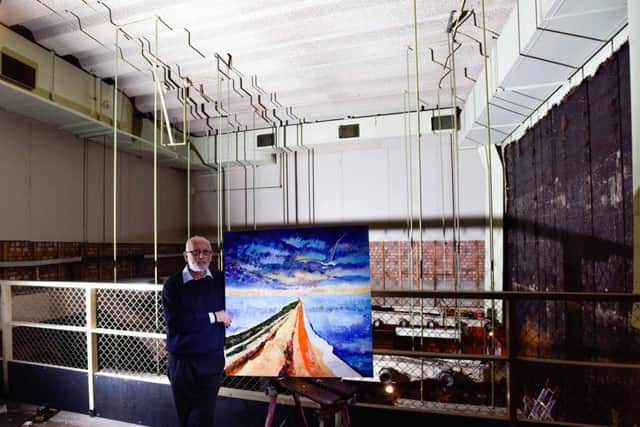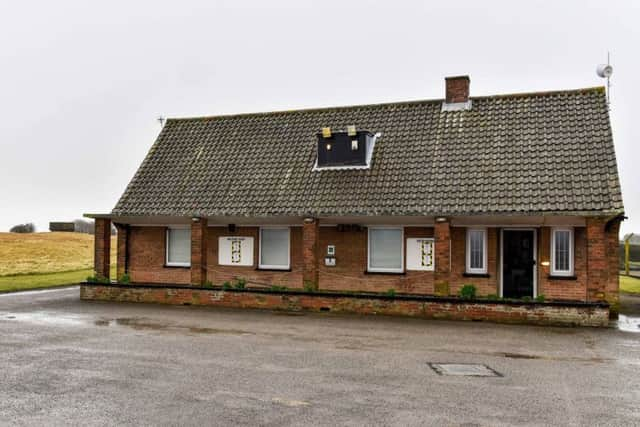Art flowers in a Cold War bunker


Schoolboys ate their lunch on the edge of the vast chasm that had opened up half a mile from Holmpton church, but they never saw the underground world that was being created.
The neat, brick bungalow the diggers left in their wake gave no clue as to what lay beneath.
Advertisement
Hide AdAdvertisement
Hide AdYet the 35,000 sq ft command bunker 100ft below ground – the size of two football pitches – is a remarkable legacy of the Cold War and of Yorkshire’s role in the front line of coastal defence.


Even more remarkable is the use that has been found for it in peacetime – as the county’s newest contemporary art gallery.
“It really is unique,” said Larry Malkin, an artist and former primary school head who is behind the initiative.
“It’s not been done anywhere else in the world as far as we know. It’s an exciting environment to look at art. Everything is designed to knock you off balance.”
Advertisement
Hide AdAdvertisement
Hide AdHe was speaking figuratively, but balancing might actually be a problem for visitors, because when the end of the Cold War rendered RAF Holmpton surplus to requirements and the Ministry of Defence sold it off, they took the floor with them.


It was ripped out with the banks of analogue computers that had been used to analyse military data in the 1960s. Access now is on suspended footways on girders 3ft above ground.
Visitors will also have to pass through a 400t tunnel to reach the galleries, which have been installed alongside a privately-owned museum to the bunker’s history.
It was around 1951 that the construction men arrived at Holmpton to dig. “People were completely mystified. They had no idea what was going on,” Mr Malkin said.
Advertisement
Hide AdAdvertisement
Hide AdThe defence ministry had originally planned to install a nuclear bunker at Sunk Island, nearby in the Humber Estuary, but the contractors hit water almost immediately.


Once the Holmpton installation was complete, with tell-tale radar dishes on the bungalow roof, around 600 crew were brought in from RAF Patrington, four miles away. That site is now a caravan park.
Holmpton remained in service as the Cold War began to thaw, becoming in the 1980s the emergency war headquarters for RAF Support Command. But in 2012 it went on the market.
The museum opened to visitors two years ago and the new art galleries – one displaying contemporary work, the other more traditional art – will welcome their first visitors on March 24, following a preview on Saturday.
Advertisement
Hide AdAdvertisement
Hide AdAppropriately, the first major artist to exhibit there will be Hull-based Lee Karen Stow, who has returned from Hiroshima, Vietnam and Sudan with images of women who have been affected by war, and with a collection of flora she has turned into art.
“Her work is really very chilling,” Mr Malkin said.